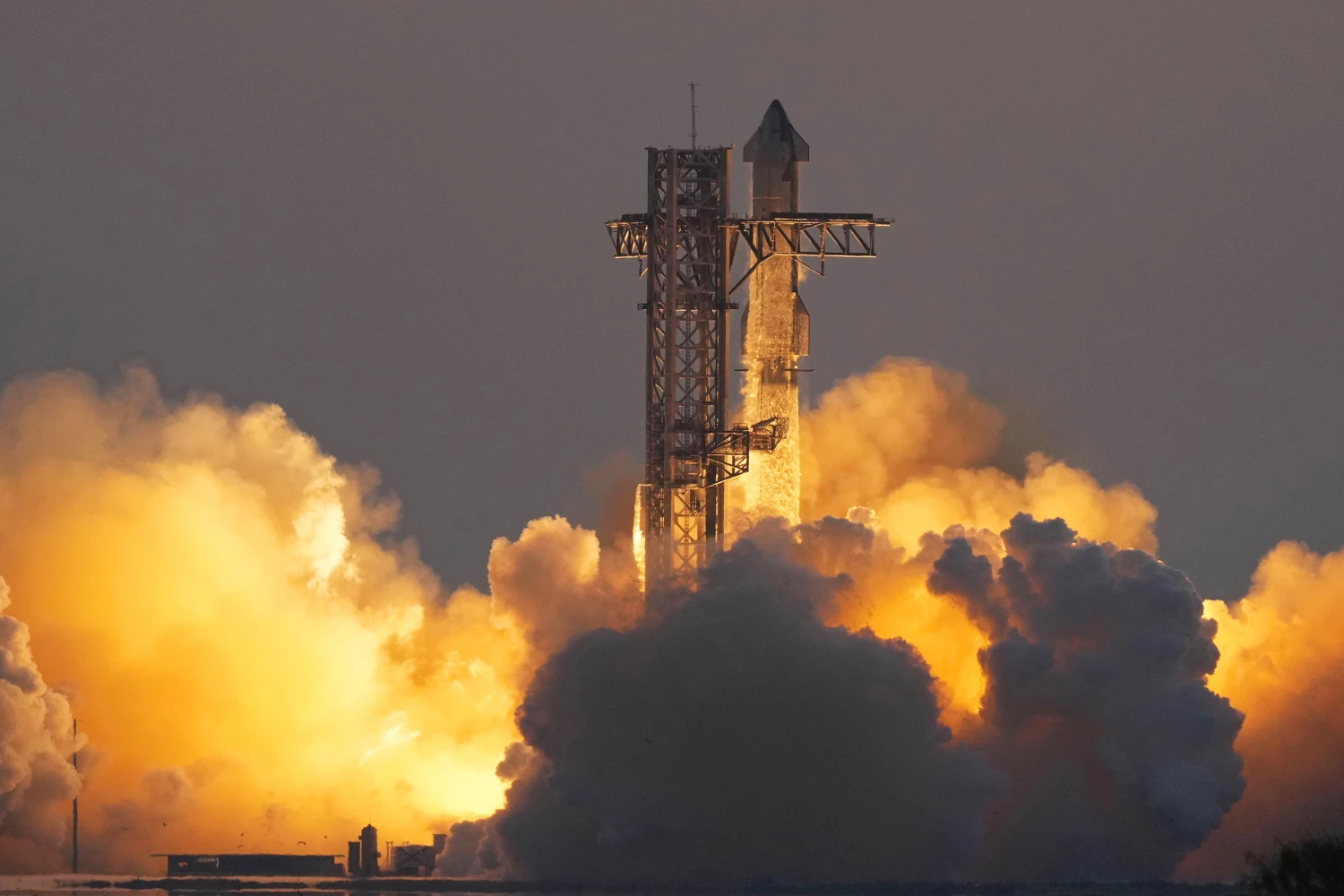SpaceX successfully carried out a daring engineering feat on Sunday during its fifth Starship test flight, bringing the rocket’s massive first-stage “Super Heavy” booster back to its Texas launch pad using giant mechanical arms. This marked a significant step forward in the company’s goal of building a fully reusable spacecraft for missions to the moon and Mars.
The booster lifted off at 7:25 a.m. CT from SpaceX’s Boca Chica launch site, propelling Starship’s second stage into space. At an altitude of around 70 km (40 miles), the two stages separated, with the booster returning to Earth.
In a bold move, the Super Heavy booster re-lit three of its engines to control its descent, aiming for the very launch tower it had just departed. The launch tower, standing over 400 feet tall, is equipped with two enormous metal arms designed to catch the booster. The 233-foot-tall Super Heavy successfully locked into the tower’s arms, prompting SpaceX CEO Elon Musk to tweet, “The tower has caught the rocket!!”
The second stage, Starship, reached 89 miles above Earth, heading towards a controlled splashdown in the Indian Ocean. Onboard cameras captured the spacecraft’s reentry, with a glowing aura of superhot plasma surrounding the ship. Though Starship successfully reentered, it exploded after landing in the ocean, either as a planned detonation or due to a fuel leak.
Musk celebrated the successful landing, calling it “precisely on target!”
The U.S. Federal Aviation Administration had just approved the launch license for this test, following some tension over regulatory delays.

